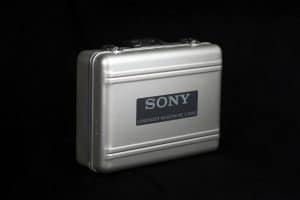Recording Studio: The Koto is a traditional Japanese musical instrument. It originated from the Chinese Guzheng but developed its own tradition in Japan since the 8th century. It was traditionally played as a form of entertainment in the imperial courts.
Depiction of the Recording Studio Japanese Koto was a motif of early traditional visual arts. The Koto is a string instrument from the zither family and can be played solo or in accompaniment. Accordingly the Koto has two different forms.
Recording Studio: The Koto – Stringed with Silk
Like its Chinese predecessor, the Koto consists of a single resonance body made of wood up to 2 meters in length, over which the strings are stretched, which when plucked brings musical notes.
Traditionally the Koto is stringed with silk. It is tuned by shifting the base on which the strings are stretched. With a pick and three fingers of the right hand (thumb, index and middle finger), the strings are plucked and they vibrate.
Originally the Koto was laid on the ground when played. Today there are Koto instruments that can be played standing on special stages with pits that are in the floor.
Depending on the use, two main forms of the Koto developed over the centuries. There is the So, a conducting instrument about 1.8 to 2 meters long and with 13 or more strings. The K’in is used as a solo instrument and is the direct successor to its former Chinese antecessor, about one meter long and has seven strings.
Recording Studio: History of Japanese Koto
The history of the Koto dates back to the Nara Period (719-793). Back then the original Chinese instrument, the Guzheng was brought to Japan and adopted as court music. The instrument subsequently was developed a bit further in Japan, but independently from its Chinese antecessor and founded its own Japan tradition. For a long time the Koto was exclusively played in the imperial court.
The famous blind Shamisen player Yatsuhashi Kengyo (1614-1684) was the first in the seventeenth century to learn how to play the instrument and it became a traditional Japanese music. His teacher was the court musician Hasui.
When Yatsuhashi Kengyo handled the Koto, he fit the tune of the strings to Japanese folk music and composed songs, which still belong to Japanese culture today. This is true for the most popular Koto song today, Rokudan no Shirabe.
He also freed the recording studio instrument from its role as a conducting instrument and made it a solo instrument. Yatsuhashi Kengyo strived throughout his life to make the Koto popular in Japan, in which he was without a doubt successful.





